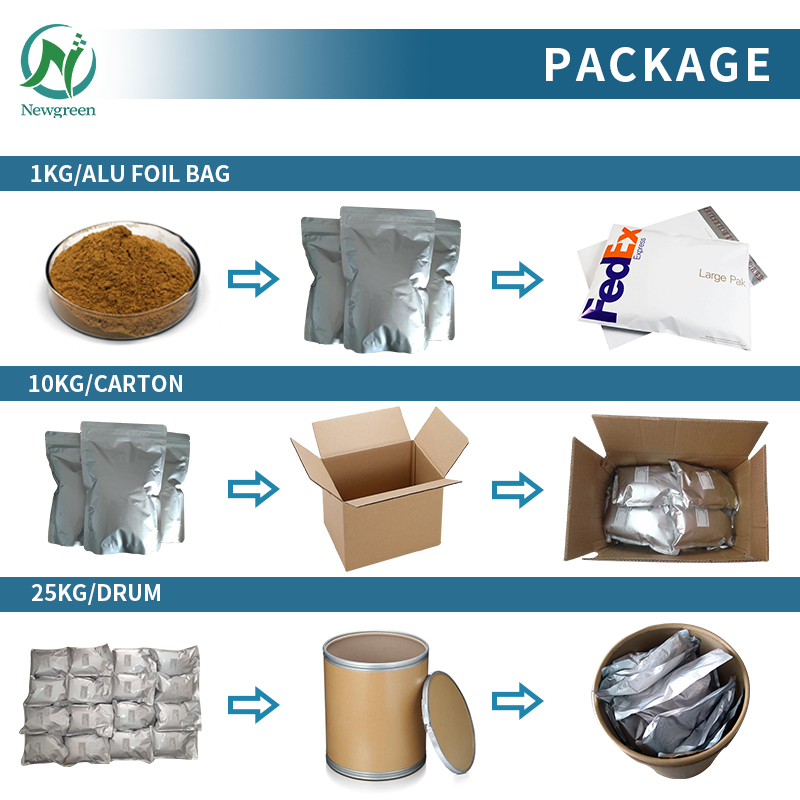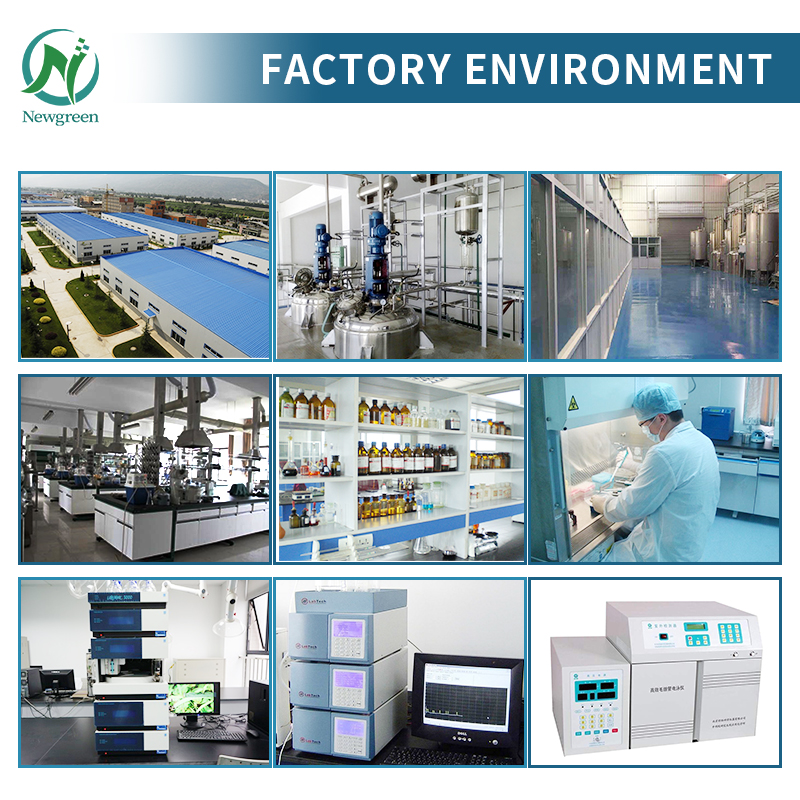protease (Inscribed type) Manufacturer Newgreen protease (Inscribed type) Supplement

Product Description
Protease is a general term for a class of enzymes that hydrolyze protein peptide chains. They can be divided into endopeptidase and telopeptidase according to the way they degrade peptides. The former can cut the large molecular weight polypeptide chain from the middle to form the smaller molecular weight prion and peptone; The latter can be divided into carboxypeptidase and aminopeptidase, which hydrolyze the peptide chain one by one from the free carboxyl or amino ends of the polypeptide, respectively, to amino acids.
COA
| Items | Specifications | Results |
| Appearance | White Powder | White Powder |
| Assay | ≥25u/ml | Pass |
| Odor | None | None |
| Loose Density(g/ml) | ≥0.2 | 0.26 |
| Loss on Drying | ≤8.0% | 4.51% |
| Residue on Ignition | ≤2.0% | 0.32% |
| PH | 5.0-7.5 | 6.3 |
| Average molecular weight | <1000 | 890 |
| Heavy Metals(Pb) | ≤1PPM | Pass |
| As | ≤0.5PPM | Pass |
| Hg | ≤1PPM | Pass |
| Bacterial Count | ≤1000cfu/g | Pass |
| Colon Bacillus | ≤30MPN/100g | Pass |
| Yeast & Mold | ≤50cfu/g | Pass |
| Pathogenic Bacteria | Negative | Negative |
| Conclusion | Conform with specification | |
| Shelf life | 2 years when properly stored | |
Function
Protease widely exists in animal viscera, plant stems, leaves, fruits and microorganisms. Microbial proteases are mainly produced by molds and bacteria, followed by yeast and actinomyces.
Enzymes that catalyze the hydrolysis of proteins. There are many kinds, the important ones are pepsin, trypsin, cathepsin, papain and subtilis protease. Protease has strict selectivity for the reaction substrate, and a protease can only act on a certain peptide bond in the protein molecule, such as the peptide bond formed by the hydrolysis of basic amino acids catalyzed by trypsin. Protease is widely distributed, mainly in the digestive tract of human and animal, and abundant in plants and microorganisms. Due to the limited animal and plant resources, the production of protease preparations in industry is mainly made by fermentation of microorganisms such as Bacillus subtilis and Aspergillus aspergillus.
Application
Protease is one of the most important industrial enzyme preparations, which can catalyze the hydrolysis of protein and polypeptide, and is widely found in animal organs, plant stems, leaves, fruits and microorganisms. Proteases are used extensively in cheese production, meat tenderization and plant protein modification. In addition, pepsin, chymotrypsin, carboxypeptidase and aminopeptidase are proteases in the human digestive tract, and under their action, the protein ingested by the human body is hydrolyzed into small molecular peptides and amino acids.
At present, the proteases used in the baking industry are fungal proteases, bacterial proteases and plant proteases. The application of protease in bread production can change the gluten properties, and its form of action is different from the action of force in bread preparation and the chemical reaction of reducing agent. Instead of breaking the disulfide bond, the protease breaks the three-dimensional network that forms gluten. The role of protease in bread production is mainly manifested in the process of dough fermentation. Due to the action of protease, the protein in flour is degraded into peptides and amino acids, so as to supply the yeast carbon source and promote fermentation
Package & Delivery



















